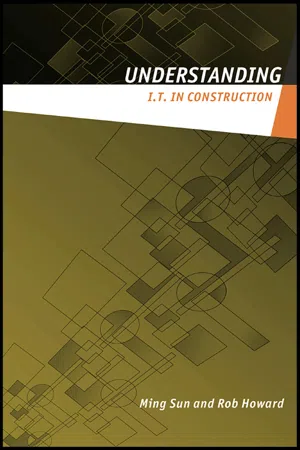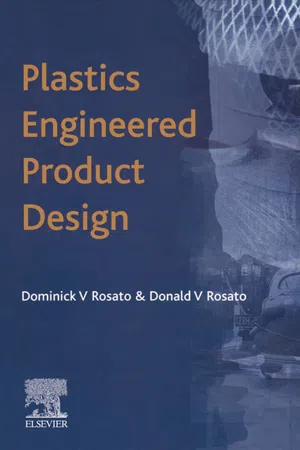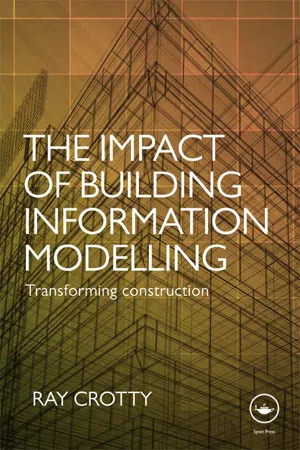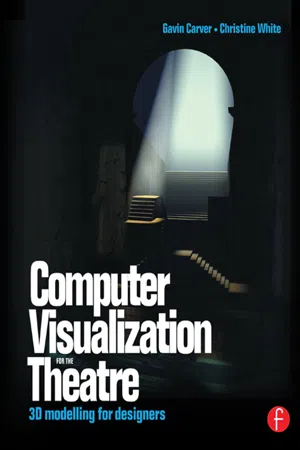Technology & Engineering
Types of CAD Models
CAD models can be categorized into two main types: 2D and 3D models. 2D models are used to represent flat objects and are often created for technical drawings and schematics. 3D models, on the other hand, provide a three-dimensional representation of an object or system, allowing for more detailed and realistic visualization.
Written by Perlego with AI-assistance
Related key terms
Related key terms
1 of 4
Related key terms
1 of 3
8 Key excerpts on "Types of CAD Models"
- eBook - ePub
- Ming Sun, Rob Howard(Authors)
- 2004(Publication Date)
- Routledge(Publisher)
To capture this kind of knowledge, a three-dimensional geometry modelling method is required. The progression from 2D to 3D CAD requires the use of more complex software. The graphics screen must now represent all three axes. In addition to creating and storing 3D objects, the CAD system needs the ability to generate different views of the objects. Depending on the way in which 3D objects are represented, 3D geometric models can be classified into wireframe, surface, and solid models. 3.5.1 Wireframe Model Wireframe models are the earliest and simplest type of 3D model. In a similar way to 2D drawings, a 3D model represents a building, or any other object, using straight and curved lines. These lines show the edges of the model. There is no concept of surface in the wireframe model. Although wireframe models do not look like solid objects, they do contain an accurate geometric description of the object being modelled. See Figure 3.6. Figure 3.6 Wireframe model Wireframe models have advantages of display speed, because the calculation involved is limited. Each and every line will be drawn, regardless of whether it is in front or in the background. However, a wireframe model does not have all the information about the object being modelled. Its display is often an ambiguous representation that leaves much of the interpretation to the user. 3.5.2 Surface Model The second type of 3D modelling, the surface model, was first developed in the early 1960s. Surface models, unlike wireframes, provide both visual and mathematical descriptions of the surface shapes of the object - eBook - ePub
- D.V. Rosato, D.V. Rosato(Authors)
- 2003(Publication Date)
- Elsevier Science(Publisher)
Today’s software developers are laced with a serious challenge concerning how to produce a safe and reliable product in the shortest possible time frame. This is not a new problem; it has simply been exaggerated in recent years by pressures from the marketplace, and the manufacturing industry certainly is not immune to those pressures. Manufacturers including throwing large budgets into software development tools and manpower have sought many solutions.Geometric modeling
Geometric modeling is one of the major uses of the CAD systems. It uses mathematical descriptions of geometric elements to facilitate the representation and manipulation of graphical images on the computer’s screen. While the central processing unit (CPU) provides the ability to quickly make the calculations specific to the element, the software provides the instructions necessary for efficient transfer of information between user and the CPU.There are three types of commands used by the designer in CAD geometric modeling. Its first allows the user to input the variables needed by the computer to represent basic geometric elements such as points, lines, arcs, circles, splines, and ellipses. The second is used to transform these elements that include scaling, rotation, and translation. The third allows the various elements previously created by the first two commands to be joined into a desired shape. During the whole geometric modeling process, mathematical operations are at work that can be easily stored as computerized data and retrieved as needed for review, analysis, and modification.There are different ways of displaying the same data on the CRT (cathode ray tube) screen, depending on the needs or preferences of the designer. One method is to display the design as a 2-D representation of a flat object formed by interconnecting lines. Another method displays the design as a 3-D view of the product. In 3-D representations, there are the four types of modeling of wireframe modeling, surface modeling, solid modeling, and hybrid solid modeling.The wireframe model is a skeletal description of a 3-D part. It consists only of points, lines, and curves that describe the geometric boundaries of the object. There are no surfaces in a wireframe model. The 3-D wireframe representations can be confusing because all of the lines defining the object appear on the 2-D display screen. This makes it difficult for the viewer to tell whether the model is being viewed from above or below, inside or outside. It is the simplest of the CAD/CAM modeling methods. The simplicity of this modeling method also implies simplicity in the database. - eBook - ePub
- Neill Hughes(Author)
- 2013(Publication Date)
- Crowood(Publisher)
Irrespective of any design methods applied, there is an immediate need to represent ideas in terms of form and function. These representations all help to develop a model of the design concept. This design model will be developed all the way through the process, ultimately ending up in a format that enables the parts to be made.THE DESIGN MODELThe design model is a representation of the design. The model can exist as anything from ideas, through to rough sketches and notes, calculations, sets of detailed formal engineering drawings, computer-generated 3D representations, to physical prototypes. CAD software products exist to help the designer to create and develop all these forms of the design model.The design model is used by the designer to record and develop ideas and to provide a basis to evaluate the design. This is true for every stage of the design, from initial concept development through to the final detail design work. The design model is fundamental to the design process. Larger design projects are undertaken by more than one engineer, and design models are used to communicate and share ideas between all those concerned with the product design, development, manufacture and use.So, whether working alone or as part of a team, a designer needs to have the skills to generate and work with the design model in order to develop and communicate an idea.Designers use a variety of model types, depending on what property of the design is to be considered and for whom the information is destined. Typically the design model may represent information relating to the following:♦ Shape (geometry, form, dimensional accuracy, tolerances) ♦ Appearance (aesthetics, material and surface finish visual effects) ♦ Function (behaviour, strength, stiffness, ergonomics) ♦ Manufacture (process-specific geometry)There are CAD software products available that enable the modelling and documentation of all these aspects of the design. The next section aims to clarify the role and categories of these products in the context of the above design model types. - Yoseph Bar-Cohen(Author)
- 2018(Publication Date)
- CRC Press(Publisher)
2 Computer-Aided DesignNicholaos Bilalis and Emmanuel Maravelakis2.1 Introduction2.2 3D CAD Models and Downstream Applications2.3 Methods for Building the 3D Model2.4 Basics of Geometric and Solid Modeling2.4.1 Parametric Representation2.4.2 Bézier Curves2.4.3 B-Spline Curves2.4.4 Rational Bézier and B-Spline Curves (NURBS)2.4.5 Subdivision Curves and Surfaces2.5 Building the 3D Model2.5.1 Wireframe Modeling2.5.2 Surface Modeling2.5.3 Subdivision Modeling2.5.4 Reverse Engineering Modeling2.5.5 Parametric Feature-Based Solid/Surface Modeling2.5.6 Direct Modeling2.6 3D Product—Assembly Modeling2.7 PLM Systems and Collaborative Design2.8 Challenges in CAD Modeling2.9 ConclusionsAcknowledgment References2.1 IntroductionA computer-aided design (CAD) is considered the use of computer systems for the creation, modification, analysis, and optimization of a design (Groover and Zimmers, 1984, McMahon and Browne, 1998, Lee, 1999, Zeid, 2005). The technique was initiated at MIT by Ian Sutherland, when Sketchpad, the first system, was created within the Semi-Automatic Ground Environment research project in 1963. CAD systems were first introduced for the automation of two-dimensional (2D) drawings, but it soon became evident that 3D representation is essential, and today, the use of the 3D model is dominant in most industrial sectors driving all downstream applications. Early systems were based on the single-vendor systems with the concept of “turnkey” solutions, followed by the development of a wide range of systems and applications outside the concept of “turnkey” solutions while simultaneously advancing the data exchange between applications; today, through the introduction of Product Lifecycle Management (PLM) systems, a new type of “turnkey” solution is observed, driven by an extensive interoperability between systems and specialized applications.- eBook - ePub
The Impact of Building Information Modelling
Transforming Construction
- Ray Crotty(Author)
- 2013(Publication Date)
- Routledge(Publisher)
1Modelling is quite a different type of activity. In this approach, the operator creates a computerised three-dimensional model of the object being designed. This can be done using drawing techniques, for example by drawing out two-dimensional objects and sweeping or extruding them to create three-dimensional forms. Alternatively, and more effectively, a model can be created using true modelling systems in which three-dimensional objects or components are inserted into computerised three-dimensional space. It is also possible to create a model using a combination of the two techniques.Once it’s complete, such a model can be used to generate any required view of the object being designed, including arbitrary sections and perspective images. The key point about a model is that being a true, complete likeness of the object, it contains all of the geometry necessary to generate these views. Generated drawings and model views are rather like photographs of the object.5.2 CAD application areas – key challenges
This chapter is concerned with the use of computers in the design of process facilities, of engineered mechanical products and of buildings and civil engineering works. There are many other important areas where computers are used in the design of products, including the design of electronic components: printed circuit boards, microprocessors and suchlike; and in fashion manufacturing, including fabric and shoe design. These application areas are outside the scope of this book.5.2.1 Process design
This area includes facilities like production plants and ships which comprise large numbers of components. Their geometry is relatively simple, but their engineering is highly complex. In process engineering, much of the design effort is carried out through the medium of schematic or logic diagrams, such as process flow diagrams, piping and instrumentation diagrams, electrical single line diagrams and so on. The challenge here is to ensure that the representations of components in all of these documents, as well as the geometry – general arrangement drawings and such like – remain synchronised and consistent with each other as the design is developed. - eBook - ePub
- Benjamin S. Blanchard, John E. Blyler(Authors)
- 2016(Publication Date)
- Wiley(Publisher)
In general, mock-ups are extremely beneficial. They have been used effectively in facility design, control panel layouts, aircraft design, and the design of smaller systems/equipment.4.5 Computer-Aided Design (CAD)10
Within the overall spectrum of computer-aided engineering (CAE), there are a wide variety of applications to include what we might classify under the terms of computer-aided design (CAD), computer-aided manufacturing (CAM), and computer-aided support (CAS). The interrelationships among these areas of activity are illustrated (for example) in Figure 4.4 , although the specific terms and definitions may vary somewhat from one application to the next.Computer-aided engineering (CAE) and related features (example).Figure 4.4Computer-aided design (CAD), defined in a broad sense, refers to the application of computerized technology to the design process. With the availability of computer tools that can be appropriately utilized in the performance of certain design functions, the designer can accomplish more, at a faster pace, and earlier in the life cycle. These tools, including supporting software, incorporate graphics capabilities (vector and raster graphics, line and bar charts, x–y plotting, scatter diagrams, three-dimensional displays), analytical capabilities (mathematical and statistical programs for analysis and evaluation), and data management capabilities (data storage and retrieval, data processing, drafting, and reporting). These capabilities are usually combined in integrated packages for application to solve a specific design problem. Three examples of design applications follow:- The utilization of graphics, combined with word processing and database management capabilities, enables the designer to do the following:
- Lay out components on electrical/electronic circuit boards, design routing paths for logic circuitry, incorporate diagnostic provisions on microelectronic chips, and so on. CAD capabilities are being used extensively in the design of large-scale integration (LSI
- eBook - ePub
Computer Visualization for the Theatre
3D Modelling for Designers
- Gavin Carver, Christine White(Authors)
- 2013(Publication Date)
- Routledge(Publisher)
During the 1980s the development of lower-cost higher-powered personal computers allowed for the development of CAD software that was aimed at the small user market (small industry and home) and, with technological advances; the features available on these products became increasingly sophisticated. In the early 1980s the Autodesk Company was established and their products have been one of the field leaders in desktop CAD applications. In the wake of the Autodesk products a number of developers have launched CAD programs of varying costs from freeware to very expensive, all of which offer varying levels of sophistication. From the early 1990s most CAD programs available to the desktop user could not only deal with points and lines on one plane but also on three axes, thus the programs were able to represent 3D shapes, displayed as wire frames, which are a series of points in space connected by lines. This development coupled with increasingly fast graphics cards allowed the user to rotate objects or buildings and to view them from any conceivable angle. Many CAD programs now offer sophisticated engineering tools that not only allow for the symbolic representation of plans but also provide structural and quantity information derived from the plans.The CAD programs described above have largely been developed to deal with architectural and engineering problems. They demand an input of accurate geometrical data and at least some knowledge of the drafting conventions of technical drawings. They are of enormous value in representing the schematics of a design clearly and accurately but their design philosophy is less suited to the more exploratory development of design concepts. The presumed product of a CAD program is a diagram of some description, which is likely to be a step on the way to building or manufacturing the represented artefact. This philosophy determines the way in which the program is operated: it is driven by precision and real-world relevance. The technical schematic emphasis of these programs has played a major part in directing the history of the use of computers in stage design and, until recently, the computer seemed to be seen largely as an aid to efficiency in the production of construction drawings and ground plans for theatre workshop and construction departments. This process alone has been of benefit in the later stages of the production, particularly to production managers, set builders and, to a certain extent, lighting designers but it has not been of enormous value in the earlier stages of a project for the theatre designer. A CAD program is a useful aid for editing technical information developed in a 3D modelling program (or vice versa) and there are a number of fairly common protocols for exchanging graphical information between a modeller and a CAD program; there are still pitfalls, though, and some information may get lost. If you are intending to use a CAD program to develop plans for printing do remember that the size of printer necessary is prohibitively expensive, and it may be necessary to get designs printed by an agency. - eBook - ePub
Manual of Engineering Drawing
Technical Product Specification and Documentation to British and International Standards
- Colin H. Simmons, Dennis E. Maguire(Authors)
- 2012(Publication Date)
- Butterworth-Heinemann(Publisher)
Visual effects from libraries of life-like textures and materials can be added to 3D models easily, using commands available on the toolbar menu. Libraries are available with a wide selection of plastics, metals, woods, stones, and other textured materials which can be applied to entire parts, features, or individual faces. Realistic changes can also be made to suggest surface reflectance, roughness, transparency, and an irregular or indented appearance.Typical CAD Drawings and 3D Models
The following examples are meant to convey to the reader the extensive range of draughting facilities available from software associated with basic programs. Obviously there is a certain amount of overlap in the scope of programs and often alternative ways of performing similar operations.Figures 5.6 and 5.7 show pictorial drawings of an engine development.FIGURE 5.6 FIGURE 5.7A pictorial view can easily be generated after drawing orthographic views, which give the dimensions in three planes at right angles to each other. Figure 5.8 shows a drawing of a cycle. Figure 5.9 demonstrates the realistic effect of rendering. The viewing point and orientation are adjustable.FIGURE 5.8FIGURE 5.9 Illustrates the variety of subtle textures available within the materials library (Page No.: 31).Architectural drawings for the design of a shopping mall are reproduced in Figs 5.10 and 5.11 . They show the outline of the development and how the completed construction could appear.FIGURE 5.10 FIGURE 5.11Figures 5.12 and 5.13 illustrate an architectural drawing from two different viewpoints. Alternative simulations may be used to assist the client in the choice of color for the finished building.FIGURE 5.12 FIGURE 5.13Design concepts, which are rendered clearly and convincingly, certainly aid at the stage where decisions need to be made to finalize aspects of shape, form and finish. The presentation of alternative solutions using the same master drawing is also an added bonus.Engineered components are often designed for clients without a technical background. To be able to observe the final product in three dimensions with its approved finish, and in an ideal situation, will reduce design time. Many people have difficulty in reading drawings, but with a presentation of an internal building detail, which perhaps shows a slate floor, and colored textured walls, the client can understand exactly how the structure will look. The drawing bridges the communication gap.
Index pages curate the most relevant extracts from our library of academic textbooks. They’ve been created using an in-house natural language model (NLM), each adding context and meaning to key research topics.
Explore more topic indexes
Explore more topic indexes
1 of 6
Explore more topic indexes
1 of 4







